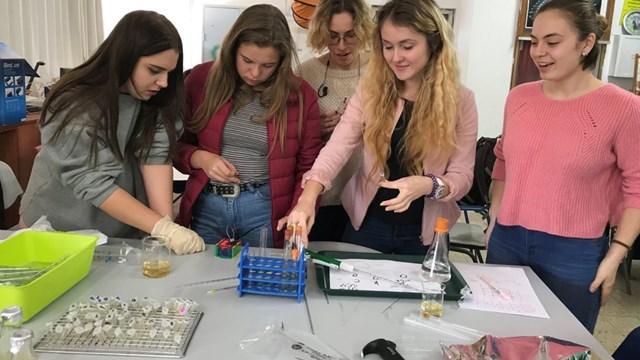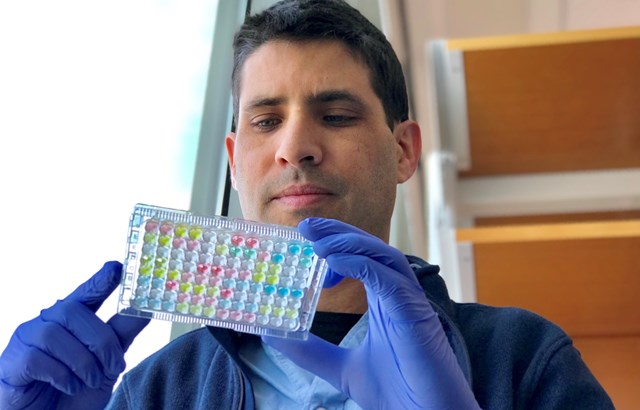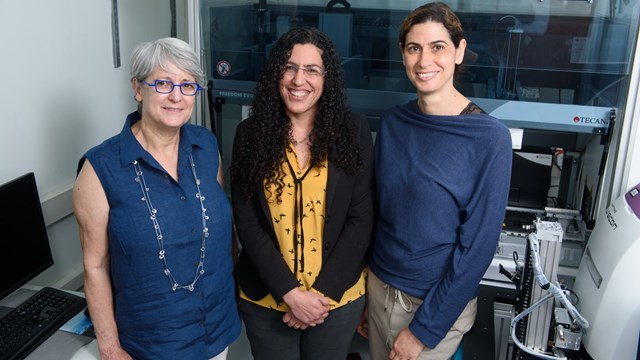
Students at Israel’s Hakfar Hayarok International School preparing bacteria experiments. Photo courtesy of Weizmann Institute of Science
The 6,000 miles between them made no difference when 200 students in Israel and in the Boston area jointly created evolution in test tubes. The 10-day science experiment helped them understand how antibiotic-resistant bacterial “superbugs” evolve.
The teens designed their experiments on Google Sheets, and these instructions were automatically carried out by a robot in a lab at the University of Massachusetts.
Two webcams livestreamed the robot’s results on YouTube so the kids in both locations could monitor and provide input to the experiment via changes to the Google Sheets, explained project initiator Amir Mitchell, a Weizmann Institute alumnus who heads a research group at the University of Massachusetts Medical School in Worcester.
“We developed a science education platform in which geographical distance is irrelevant,” said Mitchell. “High school students from all over the world can do empirical research, direct the process, check results and make new decisions based on those results.”
Over the course of the 10 days, students had to decide every day which antibiotics the bacteria would be exposed to and at what concentrations.

Weizmann alumnus Amir Mitchell, Assistant Professor in systems biology and molecular medicine at the University of Massachusetts Medical School. Photo: courtesy
The program was developed in collaboration with Prof. Anat Yarden, head of the science teaching department at the Weizmann Institute of Science in Rehovot. Mitchell also worked with Weizmann molecular genetics researcher Orna Dahan, who has experience working with a similar robot.
During initial hands-on experiments in their own schools’ science labs using equipment developed in Mitchell’s lab, the students in six Israeli schools and in two classes at Worcester Technical High School grew bacteria and exposed them to antibiotics, controlling the types, timing and concentrations.
They had ongoing discussions with their counterparts using a WhatsApp group. They took a virtual tour of Mitchell’s lab and were able to consult with him and Dahan.

From left, Dr. Bat Shahar Dorfman, Dr. Orna Dahan and Prof. Anat Yarden directed the distance-learning evolution experiment from the Weizmann Institute in Rehovot. Photo: courtesy
“The research level of this project was fairly complex,” said Dahan. “It was amazing to see the creativity, time and thought the students put into their work, and the levels of commitment and excitement showed in the lively discussions over the 10 days.
“The students discovered for themselves how different antibiotic regimens determine how quickly the bacteria develop resistance. They also got a glimpse of the molecular mechanisms that make evolution tick.”
Yarden said the project gave students a taste of the practice of advanced scientific research, granting them access to technology they don’t get in the classroom. “When students encounter unexpected results in experiments, it deepens their experience and provokes their curiosity,” she said.
At the end of the experiment, Mitchell’s lab group sequenced a number of genes from the surviving bacteria and the students compared them with the genomes of superbugs, so they could double check their results.
